Interesting Facts About Teeth and Dentistry

Our teeth are one of the most important parts of our bodies, and they are each unique to us. Our teeth are like a fingerprint: they are individual to us and never the same as anyone else’s. Teeth perform specific functions that are essential for speaking and eating. Our teeth have enamel, which is the hardest substance in the body and it protects our teeth from decay. The more that we learn about our teeth, the more important it is for us to take care of them. Find out what all our teeth do and how they help us with this guide!
Facts About Dentistry
For hundreds, and even thousands, of years, dentistry has been an important aspect of human’s lives. Even though dental technology and knowledge might not have been as well known a few thousand years ago, our ancestors still understood the importance of taking care of their teeth. People have been caring for their teeth for centuries, and historians have found evidence of dental care dating back to 5000 B.C. in ancient Egypt. The Egyptians would use crushed eggshells and ground animal hooves to clean and polish their teeth, before toothbrushes were invented. The first toothbrushes that were used anciently were actually twigs, or tree bark, that our ancestors would chew on, hoping that the frayed ends would clean their teeth. It wouldn’t be until the 1700s when a British inventor created an adapted version of a toothbrush that he had seen in China, one with a bone handle with boar bristles inserted into small holes that lined the brush and then secured with wire. Even up to the 1930s, toothbrushes were still rudimentary, until brushes with nylon bristles and ergonomic handles were developed, which is what we still use today.
Facts About Teeth
Although oral hygiene was important to our ancestors, little was known about the function and specifics of teeth that modern technology has allowed us to learn about in our day and age. Teeth are the hardest substances in our bodies, and enamel helps keep them strong and durable. We use teeth to eat, speak and chew, so they’re an important part of how we live. Even though they are hard, white and contain calcium, teeth are not bones! They cannot heal themselves or grow back if they sustain damage, so it’s very important that we are careful with what we eat and the activities that we engage in to avoid any unnecessary trauma. Additionally, teeth contain stem cells. Some researchers are even trying to use dental stem cells to regrow human teeth, which, if they can do it, would mean that we could replace lost adult teeth for the first time in history. Not only do teeth have stem cells, but they are also unique to each one of us and tell a story. Each tooth in our mouths is unique and different from the rest, and never is identical to someone else’s. Our teeth reveal how old we are, what we eat and even areas of the world that we have lived in! They are a lasting record of our life’s history.
Our mouths, and the teeth that are found therein, perform amazing functions that facilitate our ability to eat and digest food properly. Although they may be amazing, our mouths have some unusual quirks that most people don’t know about. The following are some of the weird facts about our mouth and teeth that one should think about:
- Teeth form in the womb, months before a child is even born. The crowns of babies’ first 20 teeth are already under the gumline when they are born, waiting to erupt.
- The average human produces 25,000 quarts of saliva in their lifetime, enough to fill two swimming pools.
- Plaque found on teeth contains more than 300 kinds of bacteria.
- Humans spend 38.5 days of their life brushing their teeth.
Good Dental Habits To Have
Now more than any generation before us, we have a limitless amount of options to choose from to protect our oral health and develop strong, healthy teeth. Our teeth do so much for us, so it’s important that we do everything we can to protect them. First and foremost, brushing and flossing should become part of our daily routine. Especially if your or your child has braces or an orthodontic device, maintaining a strict brushing and flossing regimen will prevent tooth decay and cavities. Brushing removes debris on the surface of the tooth while flossing removes food particles that can get stuck between teeth or near the gumline, where plaque can easily build up. Furthermore, regular checkups for both you and your child with your dentist and/or orthodontist will allow them to monitor teeth movement and keep your teeth as shiny and beautiful as possible.
For more information on what you can do to protect your teeth with or without braces, call Belmar Orthodontics at (303) 225-9016! Our dedicated team is committed to helping you and your family receive the care that you need and get the smiles that you deserve!
Does Your Child Really Need Braces?

We typically get our braces put on during our teenage to adult years, but how do you know whether your young child should have braces or not? Child orthodontics is a common practice for those children struggling with crooked, overlapping, or overcrowded teeth, or a misaligned jaw. There are many advantages for children as they receive braces earlier on in life as it can prevent future orthodontic treatment and guide incoming teeth into the proper position. Learn how to recognize whether your child needs braces through these tips!
When To Start
Young kids go through a lot of physical changes during adolescence, and some of those changes include jaw and teeth development. Orthodontics has become more and more common in young children to adjust certain orthodontic issues that occasionally occur as a child develops. Traditionally, orthodontic treatment begins once a child has lost most of their baby (primary) teeth and a majority of their permanent teeth have grown in, which typically occurs between the ages of 8 and 14. Even though braces is recommended at this age, it is a good idea to get an orthodontic evaluation for your child by the time they turn 7 years old; at this age, an orthodontist is able to detect early symptoms of orthodontic problems, such as an underbite or crossbite, which can cause severe complications and more treatment later on if left untreated at an early age. Bones are still growing during this age, so it is an ideal time to meet with an orthodontist to monitor bone and jaw development while evaluating any apparent orthodontic issues.
Advantages of Child Orthodontics
Although child orthodontics is only necessary if there are physical developmental issues within the mouth, receiving orthodontic treatment as a child has certain advantages. Visiting an orthodontist at an early age allows for observation of incoming teeth and reduces the risk of impacted teeth as your child loses their baby teeth and their permanent teeth take their place. As the orthodontist monitors your child’s teeth, they can help guide their teeth into the correct position as soon as they begin erupting, usually through braces or other orthodontic devices that help move teeth into the correct positions. Regular orthodontic visits also decrease the risk of hidden dental issues and permanent tooth extractions, as it allows for the orthodontist to adjust the jaw so that teeth crowding doesn’t occur.
Child orthodontics doesn’t always imply braces. Since a child’s jaw and teeth are still growing, many orthodontic issues, such as crowding, can be addressed before complications occur later on during adolescence. In this case, orthodontic treatment in young children is known as interceptive orthodontics. Many times, a child’s dental arch may be too small to fit all of their teeth. Just a few decades ago, it was a common practice to simply remove some permanent teeth to make space in the mouth. Now, though, child orthodontics can avoid this through the use of a palatal expander that expands the child’s upper dental arch, which allows adult teeth to emerge in a better position. Interceptive orthodontics can speed up the process of aligning teeth into the proper position and cause future treatment to be shorter and less involved.
How Much Does It Cost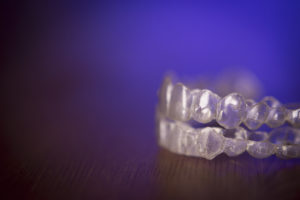
If braces are fit too early on a child, treatment can take longer and be more expensive. For this reason, it’s important to have regular orthodontic visits to monitor tooth and jaw development to ensure that whenever your child receives braces, it’s at the correct time. The braces that your orthodontist recommends will depend on your child’s type of problem that he or she has. There are three types of braces that most children will receive, and they each have different advantages and disadvantages:
- Traditional metal braces – Have steel ties holding the wires between the brackets in place. Cost is driven by what your orthodontist will charge for treatment, including multiple office visits.
- Damon braces – Do not have steel ties, but the brackets themselves hold the wires in place. Typically more expensive and can cost up to $8,000, but you pay for less dental appointments since the braces are self-ligating.
- Invisalign (or other clear or removable aligners) – Fit over the child’s teeth similar to a mouthguard. Your child will receive a number of aligners during the duration of their treatment, so cost is determined by the amount of aligners needed to achieve correction.
Just like adult orthodontics, child orthodontics can cost anywhere between $3,000 and $8,000, depending on what level of correction your child needs. If your child needs to have teeth extracted or be fitted for other appliances, the cost will most likely go up, as well. The way your child complies to orthodontic treatment will also affect the cost. Make sure that they are brushing and flossing everyday so as to avoid tooth decay, which will increase the cost of treatment as your dentist will have to treat around the braces to fix the decay.
Is It Necessary?
As mentioned before, whether your child needs braces or not at an earlier age is dependent upon their mouth structure and how their teeth form. For more information about child orthodontics or if you’re interested in scheduling a consultation, contact Belmar Orthodontics at (303) 225-9016!. Our experienced and highly trained orthodontic staff offers a variety of orthodontic treatments and technology so that you can be confident your children are receiving the best care available.
Fun Facts About Orthodontics
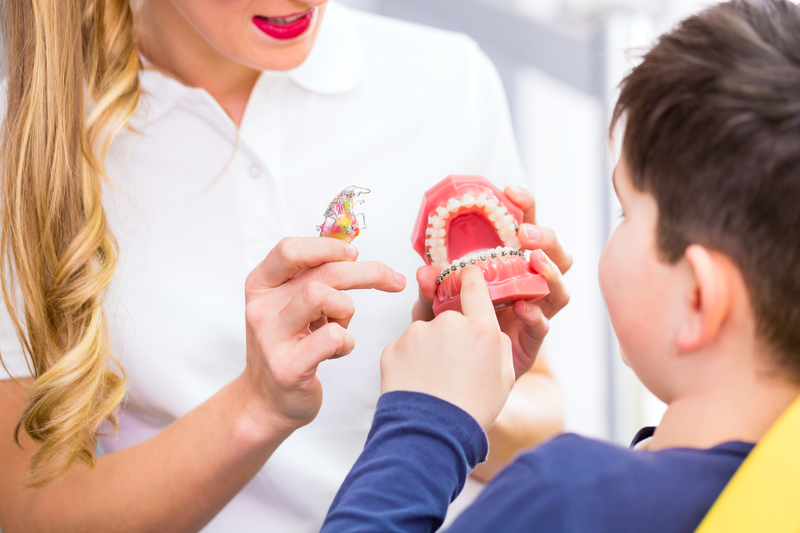
Did you know that an orthodontist is different than a dentist? Orthodontics is a dental specialty all its own, that has different goals and processes than what dentists do. There are many ways to fix the teeth and many methods that have been tried for many centuries. Find out the amazing history of orthodontics and some facts you may not know!
History of Orthodontics
People have been straightening their teeth since the time of the Ancient Egyptians, as can be seen from mummies from this era. Even the Romans and Etruscans used crude orthodontic straightening methods to get a better smile. Many philosophers hypothesized better ways to straighten the teeth. A Roman writer Celsus (1 A.D.) thought the teeth could be pushed into place. Pliny—around the same time—thought the teeth could be filed to be the ideal shape and size.
It wasn’t until 1728 that Pierre Fauchard—or the “Father of Dentistry”—made great strides with orthodontics. He first practiced crudely removing the teeth, replacing them straight, and tying them to other teeth so they could heal straighter. From his influence and others after him, modern orthodontics came to be. Matthaeus Gottfried Purmann developed dental impressions in the 17th century. In the early U.S. years, barbers and medical professionals experimented and performing small orthodontic treatments. This was until the first dental school was established in 1828.
Afterwards, J.S. Gunnell invented a form of headgear that was successful in straightening the teeth. Dental students and professionals figured out how to make a metal appliance to straighten individual teeth, which led to the now-used bracket and wire design in modern orthodontics. Before 1970, orthodontists wrapped wires around each tooth and required that headgear to straighten. This practice involved lots of metal in the mouth, which is why a better form (that we use today) was invented in the following years. Now, in the last 20 years lingual braces (braces behind the teeth) and Invisalign (transparent aligners) were invented to allow patients a hidden apparatus with orthodontics.
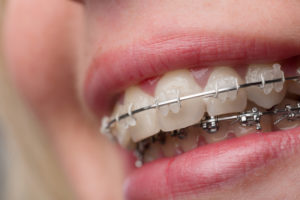
What Do Orthodontists Do?
Did you know that orthodontists are dentists? Every orthodontist is a dentist because they have completed dental school and then some. However, not all dentists are orthodontists. The standard requirements for dentists are to complete 4 years of undergraduate schooling and then 4 years at a dental school. They will have to pass exams and become certified to do dental work. Orthodontists do all of those 8 years, plus they complete 2-3 more years of orthodontics, training in bite and alignment correction and surgical orthodontics. All throughout their career, both dentists and orthodontists must do continuing education courses as well as pass tests to continue working.
An orthodontist will not fix your cavity even though they may spot the signs of tooth decay. Often, an orthodontist works closely with a dentist, as both professionals work on your mouth. What one professional doesn’t do, the other will do. Dentists do everything relating to tooth decay (cavities), gum disease and other oral health diseases as well as remedying dental emergencies. An orthodontist performs services that a dentist doesn’t do such as:
- Bite and alignment correction in children and adults (child orthodontics and adult orthodontics)
- Surgical orthodontics, which is surgery to help remedy a misaligned jaw or bite.
- Braces design, fitting, adjusting and complete process with lingual braces, ceramic (clear) braces, traditional metal, and Invisalign treatment.
- Training in placing temporary anchorage devices, which are tiny screws in the mouth that push, pull, lift or intrude teeth that are being straightened.
- Designing and creating retainer devices to keep bite, alignment and teeth in proper position.
Facts About Braces
- An orthodontist must complete 4 years of dental school, plus 3700 hours or specialized training in orthodontics to get their degree.
- There are more than 19,000 orthodontist members under the American Association of Orthodontics in the U.S., Canada and abroad.
- 1 in 4 people with braces are adults.
- Children make up another 1/4th of people wearing braces to correct bite and alignment.
- Because of modern technology, all four of your dental options (lingual, metal, ceramic and Invisalign) can straighten your teeth in about the same amount of time.
- It is possible to only get braces in either your upper or lower jaw if the other jaw is straight.
- The jaws stop growing as a child ages. That growth stops towards the end of the teenage years around 17 or 18. Straightening the teeth is effective for people after this age, but it may take longer than it would for children.
- Patients generally see their orthodontist every 6-10 weeks for braces adjustments. Patients with severe bite and alignment issues may need to come in more often.
- Orthodontists often usually have “DDS” or “DMD” after their names. This stands for “Doctor of Dental Surgery” and “Doctor of Dental Medicine”. Both are considered equal degrees, but the degree given depends on the dental school attended before orthodontic training.
- Materials used in metal braces are so light that they won’t set off metal detectors in airports.
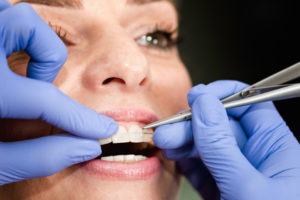
How Do Orthodontics Help People?
If you’ve never been to an orthodontist, you may wonder why you need one. Not everyone may need orthodontics to correct bite and alignment issues, but everyone should see an orthodontist at some point. The American Association of Orthodontics recommends that every person have an orthodontic visit between ages 7 and 8. This is prime time to detect bite and alignment issues that would lead to crooked teeth, speech impediments, oral hygiene diseases, and problems chewing, biting and functioning normally.
When issues are found, they can quickly be corrected so children can grow and develop normally. If a teen or adult wants to straighten their teeth to boost their confidence and success, they can receive braces starting around age 11. For specific questions about our orthodontic services, call Belmar Orthodontics today at (303 225-9016!
How Braces Design Has Evolved
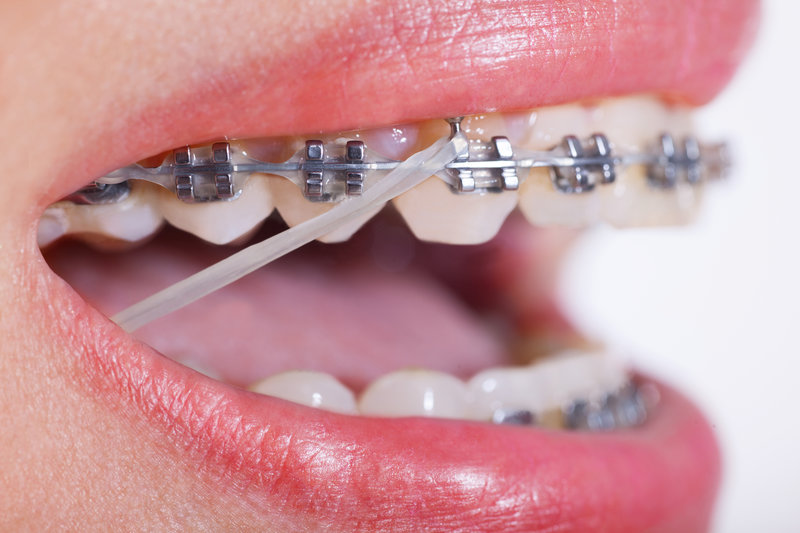
Did you know that orthodontic care dates back many centuries? The Ancient Egyptians, Romans and more all had methods for straightening the teeth. Some methods worked, while others were just downright painful. In modern times, braces design in orthodontia has been perfected. Each part of the braces is important and plays a role in straightening the teeth. Find out how braces came to be and why they are designed a specific way to get your teeth straight in as little time as possible!
Ancient Orthodontics
Braces design and orthodontic work itself has been around for many centuries; it’s not just something that we enjoy today! In fact, researchers have found that the Ancient Greeks, Etruscans, and the Romans were all some of the cultures that practiced orthodontia. However, their methods were vastly different than the methods used today. For example, in all of these cultures, braces design was different than the brackets and wires we know and love. The ancient Egyptians, however, did use metal bands around their teeth. These metal bands were found on mummified bodies, showing that even in death people valued the aesthetics of a straighter smile.
Ancient philosophers and physicians had to guess at how best to straighten the teeth. Some physicians forcefully pulled the teeth with crude tools until they were straight. In some of these cases, the resulting loose tooth had to be strapped to an adjacent tooth in order to heal into place. Methods such as these were just downright painful!
Evolving Braces Design
In later centuries, more and more philosophers and physicians experimented with better braces design. Europeans in the 17th and 18th centuries began using wax molds to make impressions of the teeth. Some also found plaster to be useful in making models of the teeth. Models allowed physicians to view the teeth in their crooked state and then plan how they wanted the teeth to eventually look. Pierre Fauchard is considered the “Father of Dentistry”. He created strips of metal that had spaced holes that fit around the teeth. This is a baseline design of the brackets and wires braces design that is used today to fix tooth alignment.
Even though Fauchard made some worthy orthodontic advancements, Edward Hartley Angle is actually the one considered to be the “Father of Modern Orthodontics.” He made a very effective braces design and also identified malocclusion (or misalignment) and how to correct it properly. Eventually in the 1970s, orthodontists were sticking to the braces design of attaching brackets to the teeth and fitting an archwire around both the upper and lower jaws.
Modern Orthodontics
In eras past, braces design was done according to the needs of adults. Children did not commonly receive orthodontic care, whereas in modern times they do. Early orthodontic care for children is needed to correct bite and alignment issues that can become severe later in adolescence and especially in adulthood. Once a child has this early orthodontic care, they will later receive braces once more to straighten the permanent teeth as they come in. Many people, therefore, have braces twice in their life if they choose to have orthodontic care. In modern times, around 4.5 million people each year wear braces.
Traditional metal braces are the most popular option available to patients, and are the most effective at straightening the teeth. However, technology also allows patients to choose lingual braces, ceramic braces and Invisalign transparent aligners. Lingual braces are metal and are attached to the inside of the teeth (tongue-side). Clear, ceramic braces are made from ceramic material and mimic the same design as traditional metal braces. However, they help decrease demineralization and their white material blends into the color white of the teeth. Invisalign is a system of transparent aligners that a patient can switch out every 1-2 weeks. The most aesthetically pleasing option, it also allows patients to remove the aligners for normal brushing, eating, cleaning, and more.
Parts of Braces
In order to take care of your braces well, it’s important to know about all the different parts and why they are important. We will use traditional metal braces as an example. The individual elements that work to correct your teeth are referred to as the “appliance.” The main parts of your metal braces will include:
- Bands – Patients will have a thin ring fitted to their back molars when receiving braces. This ring is typically made of stainless steel and is used to secure other orthodontic attachments, such as hooks, brackets, or tubes.
- Brackets – A bracket can either be bonded to the tooth using a tooth-colored cement or it can be attached to a band. They are usually made of stainless steel or clear ceramic depending on the type of braces design you choose. They guide and support the archwire into the appropriate placement.
- Archwire – This is held by brackets or other orthodontic attachments. The archwire is designed to guide the shifting of the teeth during treatment. These wires are traditionally made from stainless steel, but can also be made of titanium.
- Elastics (rubber bands) – These rubber bands help create a force to move the teeth in a particular direction. These are especially helpful for pulling down or pushing very crooked teeth into place. The elastics are often attached to a molar band and upper ball hook.
- Elastic Ties – Elastic ties are small rubber bands that go over the brackets. These hold the archwire in place. They are available in a variety of colors that patients can switch out every time they come in for a check-up.
- Springs – Using the force of a small spring, a space can be opened or closed between the teeth. These springs go between brackets and around the archwire. They are usually made out of stainless steel or titanium.
Get Fitted for Your Braces
Braces are an amazing way to straighten your smile. Braces design has been perfected to get your teeth straight in no time. To get fitted for your set of braces, call Belmar Orthodontics today at (303) 225-9016.
How Do Adult and Child Orthodontics Differ?

Advancements in adult and child orthodontics have triggered a rise in adults seeking treatment for oral challenges they have had for years. When deciding to pursue orthodontic treatment, understanding the differences between adult and child orthodontics can help you decide what type of treatment is right for you. Everyone should want their best smile. Feeling confident about your teeth and smile is essential for healthy self-esteem and confidence. You can achieve both of those benefits with braces.
Benefits of Braces
For years, braces have helped millions of people receive a more beautiful smile. About 4 million Americans on average each year are wearing braces. You may think that braces are mostly for teenagers, but you may be surprised to know that about 25% of braces wearers are actually adults. A large portion of those 4 million are also children. Braces benefit people of all ages and it’s never too late to get your own set. Why are braces so important? Straighter teeth keep the mouth in proper alignment and help even out the pressure placed on the jaw each time you talk, bite, eat and more. When the teeth are straighter, they are easier to clean, especially to floss in between the teeth. This is why people with straighter teeth have a reduced risk for oral health problems such as tooth decay and gum disease.
Tooth Decay and Gum Disease
The biggest oral health problems are tooth decay and gum disease. These problems come from lack of good oral hygiene habits. If you skip on brushing and flossing the teeth (or not doing them enough) you may start to have problems. When food sits on the teeth, the sugars from the food you ate (or drank) mix with bacteria in the mouth. This mixture creates a sticky acidic substance called plaque. That plaque works hard to erode your tooth enamel. If it sits on the teeth long enough without being cleaned through brushing or flossing, it will seep into the center of your tooth, called the pulp. This is where that acidic plaque will start to decay your tooth. If left untreated, the problem can become severe. Tooth decay is the most wide-spread childhood disease.
Gum disease is similar to tooth decay, but it has to do with the gums. Plaque is not your friend in this case either. When it sits on the teeth for too long, it can irritate the gums. You may notice your gums begin to turn more red and they may become inflamed. Over time, if good oral hygiene habits are not established, the gums will begin to recede from the teeth. This can eventually cause the teeth to begin falling out. About 64.7 million American adults suffer from some form of gum disease. That’s not even including the number for children! Even though tooth decay and gum disease are so wide-spread, they can both be prevented by brushing and flossing several times a day and by establishing and keeping good oral hygiene habits.
Child Orthodontics
One area we specialize in is child orthodontics. A large portion of the people that wear braces are children. The American Association of Orthodontics recommends that children have their first orthodontic visit between ages 7 and 8. Having an examination early-on helps prevent the progression of orthodontic issues that may be present. In children, we can detect certain orthodontic problems—such as underbite or crossbite—that are present. These problems can be fixed with child orthodontics and other bite and alignment problems such as overbite, openbite and malocclusion. The jaw is still forming in children, so performing child orthodontics at this age can help easily correct problems that are harder to deal with as an adult. Even if your child does not show any signs or symptoms of orthodontic complications, you can still benefit from child orthodontics. Some benefits include:
- Monitoring the facial and jaw development
- Observing the progress of incoming teeth
- Guiding incoming teeth into their proper positions
- Reducing the risk of impacted teeth
- Decreasing the risk for permanent tooth extractions
- Detecting hidden dental issues
Adult Orthodontics
Adult and child orthodontics are very similar. However, it often takes longer to correct bite and alignment problems in adults than it does children or teenagers. This is because the jaw and mouth has stopped growing by adulthood. If bite or alignment problems are severe, an adult may have to look into receiving surgery to correct the problem. Adults also have a few more options when it comes to what kind of braces they would like. Adults and teenagers have the option to choose these types of braces besides traditional metal braces:
- Lingual Braces – These are also known as “Incognito” braces. They are a hidden braces apparatus on the tongue-side of your teeth. Worn on the inside, no one will even know you are wearing braces.
- Invisalign Transparent Aligners – This is a series of removable transparent aligners that are custom-made for your teeth. They can be removed for activities such as eating, drinking, sports and more. Because they are transparent, they are also a secret way for adults and teenagers to discreetly straighten their teeth.
- Clear Ceramic Braces – Made of ceramic material, these braces fit in with the color of your natural teeth. Ceramic material helps reduce the risk for demineralization and staining.
Your New Smile
Whether you are an adult or child, it’s never too late to improve your smile! For people of all ages, a straight smile boosts confidence and self esteem. For adults, that new smile of yours could help you land a job. Studies have also shown that straighter smiles make you appear more confident, successful, attractive and even more trustworthy to others. The benefits of braces are just too good to pass up! If you would like a new smile today, call our Belmar Orthodontics office at (303) 225-9016!
Why You Need Professional Orthodontic Care
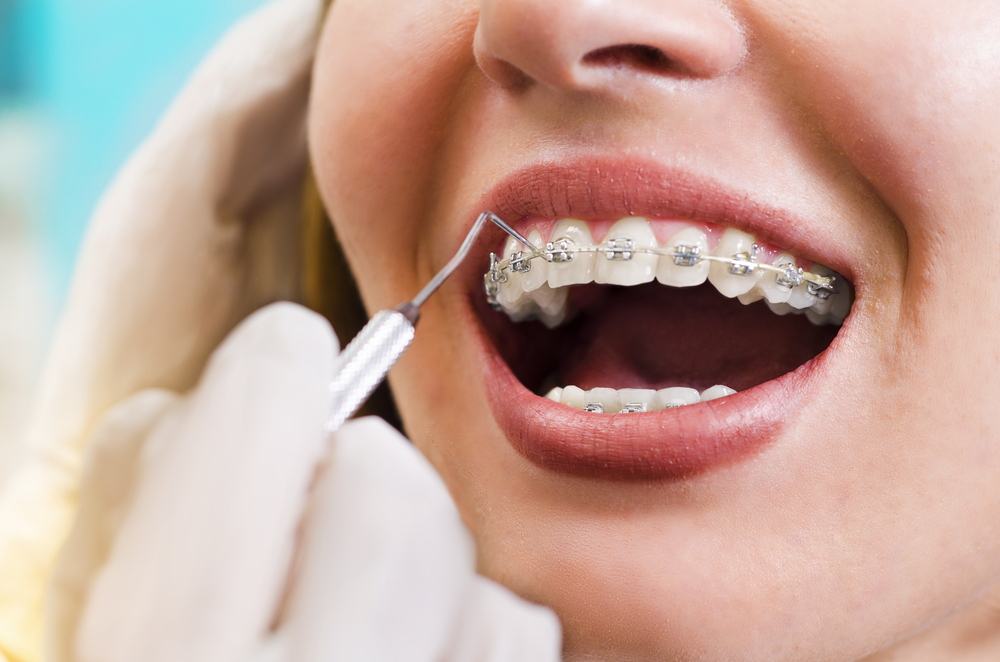
Why is professional orthodontic care so important? The economy has fluctuated from good times to bad times over and over in the last couple of decades. Some people try to cut corners when it comes to achieving healthy smiles by straightening their teeth themselves. Do “cutting corners” and “healthy” go hand-in-hand? Not at all! Only a professional orthodontist is trained to provide you a completely healthy and straight smile that you can’t get anywhere else. Proper orthodontic care can ensure that your teeth stay healthy and free from gum disease, tooth decay and tooth loss. It will also ensure that your teeth move appropriately so that your bite, alignment and function work the way they were designed to. At Belmar Orthodontics, we can provide you a smile that you will cherish the rest of your life. Find out why professional orthodontic care is worth the time, money and effort to achieve a wonderful smile.
Cutting Corners On Your Oral Health
We all know that problems will arise if proper oral hygiene habits aren’t followed. That includes brushing and flossing several times a day (after every meal if possible), seeing your dentist and orthodontist as needed, and making sure the teeth stay clean, straight and healthy in general. You would never want to save some time by cutting out brushing your teeth altogether right? How about flossing? Or maybe never seeing a dentist? There are major problems that can arise from choosing to cut corners on your oral health. Some of the main problems are gum disease and tooth decay that can literally rot your teeth out.
Gum Disease
Gum disease affects over 64.7 MILLION American adults. That means that there are many millions of Americans not taking proper care of their teeth. What does gum disease cause? It begins with gingivitis, or a buildup of sticky bacteria-filled plaque that coats the teeth and irritates the gums. Without cleaning the teeth often enough, the gums will begin to become red, inflamed and even bleed frequently. Skipping on the hygiene will make gingivitis more severe until it becomes full-blown gum disease, also known as periodontitis. At this stage, the gums will recede and the teeth can literally fall out. Yikes! Nobody wants that right?
Tooth Decay
Tooth decay is a problem that’s not far behind gum disease. It also has its beginnings when a person chooses to skip on their oral hygiene practices and keeps doing it. That sticky plaque that coats your enamel is a mix of bacteria and sugar that is actually an acidic substance. The acid will erode your hard tooth enamel and eventually seep into the soft center of your tooth where it will accelerate tooth decay.
Do-It-Yourself-Orthodontics
Gum disease and tooth decay are both serious conditions that you want to avoid at all costs. You only get one set of teeth, so the goal should always be to keep them healthy, right? Cutting corners (even simply skipping cleaning the teeth) causes major damage to your oral health. Do-it-yourself-orthodontics is a new trend that has popped up on the scene. ABC news reported on this trend and how damaging it can be to your oral health. Many people wanted to cut corners with proper orthodontic care and do their own straightening at home using crude methods with rubber bands, fishing line, paper clips and any other material you could think of.
Not surprisingly, many patients (especially adolescents) who attempted to do their own orthodontic care damaged their teeth “so extensive[ly] that teeth cannot be saved.” That comes straight from the president of the American Association of Orthodontists. Do-it-yourself methods of orthodontics are bound to lead to many more oral health problems than you could have ever imagined. So far, it has proved to be disastrous for those who attempt to cut corners. Remember, cutting corners on your health is just that…cutting corners. Nobody comes out a winner.
Proper Orthodontic Care
When you only have one set of pearly whites, why take a chance on losing them? Orthodontists must extensively train for years and attend dental school. They then take an additional 2-3 EXTRA years to study orthodontic practices and how to keep your mouth the healthiest it can be. You get what you pay for and if that’s trying to straighten your own teeth with fishing line, you can bet that you’ll have a low-quality results. With professional orthodontic care, you’re going to get a professional and effective experience. Plus, you’ll actually save yourself time, money and risk of disaster by investing in orthodontic care the proper way.
The cool thing about our orthodontic office is that we offer more than just traditional metal braces. If you want to straighten your teeth more discreetly (or not have anyone know), we have Invisalign transparent aligners, lingual braces, ceramic clear braces, retainers and more. At Belmar Orthodontics, you can be sure to get a beautiful, straight smile AND keep all of your teeth healthy and strong for years to come. Simply call our office at (303) 225-9016 for your free consultation!
